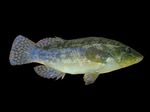Publication details
Loss of stomach, loss of appetite? Sequencing of the ballan wrasse (Labrus bergylta) genome and intestinal transcriptomic profiling illuminate the evolution of loss of stomach function in fish. (2018)
BMC Genomics 19, 186.
Lie KK, Torresen OK, Solbakken MH, Ronnestad I, Tooming-Klunderud A, Nederbragt AJ, Jentoft S, Saele O
Abstract: BACKGROUND: The ballan wrasse (Labrus bergylta) belongs to a large teleost family containing more than 600 species showing several unique evolutionary traits such as lack of stomach and hermaphroditism. Agastric fish are found throughout the teleost phylogeny, in quite diverse and unrelated lineages, indicating stomach loss has occurred independently multiple times in the course of evolution. By assembling the ballan wrasse genome and transcriptome we aimed to determine the genetic basis for its digestive system function and appetite regulation. Among other, this knowledge will aid the formulation of aquaculture diets that meet the nutritional needs of agastric species. RESULTS: Long and short read sequencing technologies were combined to generate a ballan wrasse genome of 805 Mbp. Analysis of the genome and transcriptome assemblies confirmed the absence of genes that code for proteins involved in gastric function. The gene coding for the appetite stimulating protein ghrelin was also absent in wrasse. Gene synteny mapping identified several appetite-controlling genes and their paralogs previously undescribed in fish. Transcriptome profiling along the length of the intestine found a declining expression gradient from the anterior to the posterior, and a distinct expression profile in the hind gut. CONCLUSIONS: We showed gene loss has occurred for all known genes related to stomach function in the ballan wrasse, while the remaining functions of the digestive tract appear intact. The results also show appetite control in ballan wrasse has undergone substantial changes. The loss of ghrelin suggests that other genes, such as motilin, may play a ghrelin like role. The wrasse genome offers novel insight in to the evolutionary traits of this large family. As the stomach plays a major role in protein digestion, the lack of genes related to stomach digestion in wrasse suggests it requires formulated diets with higher levels of readily digestible protein than those for gastric species.
| Labrus bergylta |
[ Opisthokonta | Metazoa | Eumetazoa | . . .
. . . | Labriformes | Labridae | Labrus ]
 Courtesy of Hans Hillewaert
Courtesy of Hans Hillewaert
|
Genome files Show genomes |










